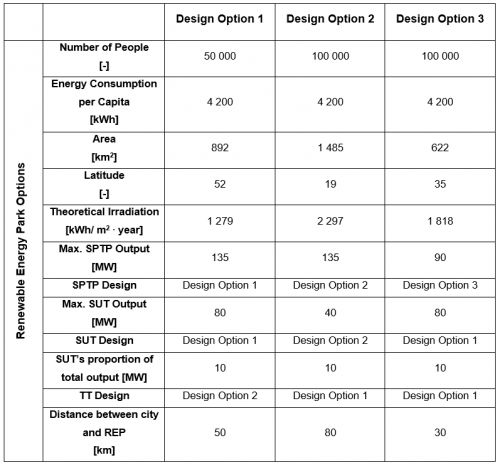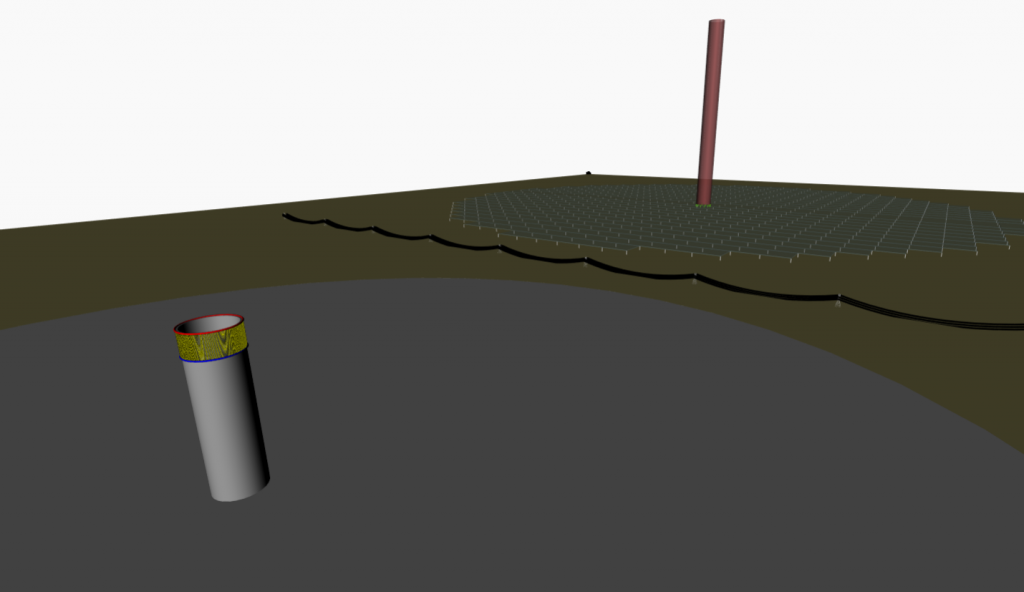The Renewable Energy Park
As a growing global population cause a high energy demand, while conventional power generation is responsible for environmental pollution, humanity is forced to focus on renewable energy. Solar Power Plants can contribute to a more sustainable and environmental-friendly energy production just by using the sun as a charge-free and unlimited source of energy. As within 6 hours, solar radiation in the desert provides more energy than mankind consumes in a year, the sun offers an enormous potential.
But solar systems are still sensible and vulnerable systems in terms of thermal losses and failures leading only to a low energy input to the power grid. Moreover, their efficiency is highly dependent on the interaction of all components as well as characteristics of its location, like e. g. the solar radiation, weather conditions, etc. This is the reason why during the design process a lot of adoptions and optimizations of the components’ geometry and function are taken to reach the highest possible efficiency and reliability. This iterative design process will lead to a maximal exploitation of their potential, a decrease of total investment costs as well as to a competitive position at the energy market and hopefully, at someday even to a total replacement of fossil fuels.
To use this potential of the sun, the exclusive supply of a city with solar energy from the “Renewable Energy Park” will be simulated in the following. The Park serves as a prototype and consists of a Solar Tower Power Plant (SPTP) and a Solar Updraft Tower Plant (SUTP). The SPTP mainly generates electricity, which is used by the inhabitants of the city. The SUTP serves as a back-up for the SPTP on cloudy days or in the case of damages by e.g., strong winds. At the same time, it supports the regular generation of sustainable energy for the city. Depending on the number of inhabitants, the number of the SPTP is adopted in order to meet the daily energy consumption per capita. With a changing number of SPTPs, the SUTP as the back-up has to be adopted as well. Therefore, functions describing the connection between the size of the plants and the needed electrical output based on existing SPTP and SUTP are determined
The produced electricity is transported via Transmission Towers to the city and the final consumers. As solar power plants typically require a large area as well as a minimum of constant solar radiation throughout the year, the ideal location of these are deserts. This might lead to great distances between the Renewable Energy Park and the energy demanding city, which will require a high amount of Transmission Towers. Moreover, the sizes and type of the Transmission Tower will be adopted according to the amount of electricity which has to be transported.
The aim of this simulation is the evaluation of the feasibility of the combined usage of two different solar power plants and Transmission Towers for the energy supply of virtual cities. The desired increased efficiency and reliability by two solar power plants will be assessed by environmental impacts and costs. The focus will be placed only on the construction phase, or rather the material consumption during this phase, as during the usage of the solar power plants nearly no emissions are expected.
For this purpose, three different city-scenarios with different numbers of inhabitants are determined and input parameters as the electrical output, the towers’ height and collector field diameter of the SPTP and SUTP as well as the distance of the Renewable Energy Park to the city are varied. The following table summarizes these input parameters.
Fig.1: Summary of the predefined input parameter for three virtual cities [authors’ diagram]
Within the following pages every individual system of the Renewable Energy Park will be introduced by a functional description, an explanation of its physical and logical decomposition in form of an Ontology as well as a visualization in form of a Parametric Model. These information serves as the basis for the integration in the above-mentioned way. Thus, a Combined Ontology and a Combined Parametric Model will be developed, presented and analysed.
Fig.2: Energy park with Solar Power Tower and Solar Updraft Tower [taken from Dynamo Sandbox]
See also other individual systems:
Or main topics:

